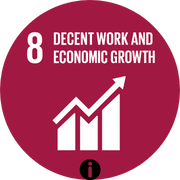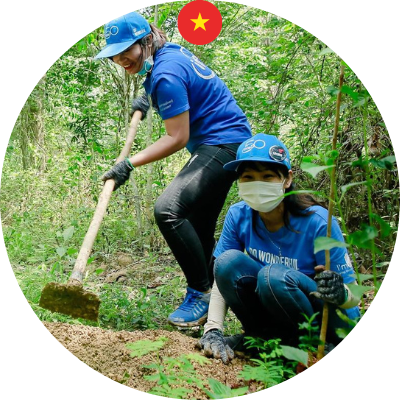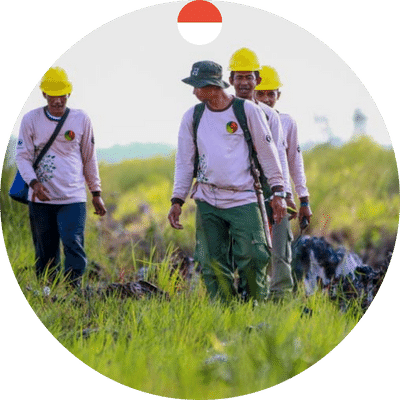Forest restoration in Kenya
Origin
This project is initiated by Eden Reforestation Projects. Eden works with local communities to restore forests on a massive scale, thereby creating jobs, protecting ecosystems, and helping mitigate climate change.

Modal Box Title
Table of contents
Project location
Located in Southern Kenya’s Mau district, the project site spreads across six distinct reforestation sites and has a total area of 5,700 hectares.
Kenya is an extensive East African country situated between Lake Victoria and the Indian Ocean. Nairobi, the nation’s capital, is a major regional commercial hub whose economy relies mainly on agriculture and tourism for its external revenue.
According to some estimates, 36% of the Kenyan population lives below the poverty line, making food security and poverty two of the country’s most pressing development issues.
In the Mau region, the local population faces obstacles such as restricted access to potable water, inadequate road infrastructure, and inadequate educational facilities. The Mau Forest features numerous rivers that run westward into Lake Victoria and impact the lives of millions of people.
Deforestation in this region, which has happened mostly since the 1970s to support agriculture, charcoal manufacture, and ranching, has resulted in significant land degradation, which, in conjunction with frequent droughts in the region, has caused serious hydrological damage to local watersheds.
Project objectives
The seeds will be planted on land that belongs to the community by local residents. People in the area will be hired as planters, nursery workers, and forest rangers as part of the project, guaranteeing them steady income in exchange for their participation in environmentally responsible land management.
Employing locals as planters, nursery workers, and forest rangers as part of the project activity ensures a steady income from sustainable land management methods. This steady revenue affords the population access to education, nourishment, and health care.
Education, nutritious food, and medical treatment are all made more accessible to the local population because to this reliable source of funding.
It is predicted that 14.25 million Afromontane trees will be planted at this site over the enormous area of the site and the project length of 7 years, also thanks to the support of all Kuwi members.
Temperate forest restoration
This project follows the Project Drawdown conduct, research, insights, and analysis as a core theme in the project development. The climate solutions for this project is Temperate Forest Restoration.
Sustainable Development Goals
When allocating our members’ funds, we’re committed to aiding in the Sustainable Development Goals set by the United Nations. Below are the SDGs acknowledged for this project.
💡 Click on the Icon to read follow the progress on each SDG.
Photos 📷





IUCN Red List
The state of the world’s biodiversity can be determined in large part by looking at the IUCN Red List. It is a powerful instrument to inform and spark action for biodiversity conservation and policy change, which is essential to safeguarding the natural resources we depend on for survival. It is much more than a list of species and their condition.
Flora
The Kenyan province of Mau is home to a wide variety of flora, including both native and exotic species.
The yellow-barked acacia tree is one of the most prominent native species in the Mau region, serving as a major source of food and shelter for many of the region’s animals. African olive and African blackwood are two additional native trees found in this region.
Additionally, the Mau region is home to a variety of grasses, such as red oat grass and star grass, which provide vital grazing grounds for the region’s livestock and wildlife.
In addition to native species, a variety of exotic species have been brought to the Mau region. These include the eucalyptus, which is used for wood and firewood, and the pine tree, which is used for wood and paper.
In addition to a variety of flowers and other flora, the Mau region is home to the African daisy and the wild sunflower. These plants provide significant nectar sources for the region’s bees and other pollinators, as well as habitats for many of the region’s butterflies and other insects.
Overall, the rich flora of the Mau region plays an important role in the region’s ecosystem, supplying food, shelter, and other resources for a broad variety of wildlife and supporting the local human population.
Fauna
Kenya’s Mau region is home to a diverse array of native and invasive species.
The African elephant is one of the most famous native animals found in the Mau region since it is a keystone species in the region’s ecosystem and has a significant impact on the environment. In addition to the Maasai giraffe, the Cape buffalo and the impala are also indigenous to this region.
The region of Mau is also home to a variety of species, such as the grey-crested helmet-shrike and the golden-winged sunbird. These birds serve a crucial role in seed dispersal and pollination, contributing to the region’s biological richness.
In addition to native species, a variety of exotic species have been brought to the Mau region. These include domesticated cattle, which are essential to the local economy, and the widespread warthog.
The Mau region is also home to numerous reptiles and amphibians, including the African rock python, the Nile crocodile, and the Kenyan sand frog. These creatures play crucial functions in managing pest populations and preserving the ecological equilibrium.
Overall, the rich flora of the Mau region plays a crucial role in the region’s environment, supplying essential ecological services and maintaining the local human population.













































